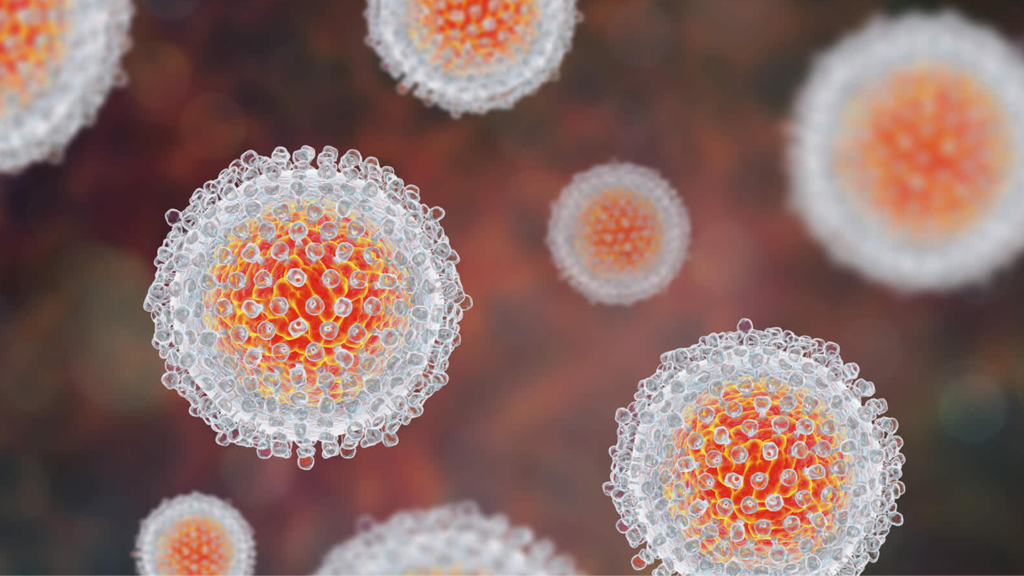
In the intricate landscape of intimate health, it’s easy to find oneself navigating through a maze of acronyms and medical jargon. Two terms that often cause confusion and raise questions are Urinary Tract Infections (UTIs) and Sexually Transmitted Infections (STIs). While they both pertain to our most personal and sensitive areas, these conditions are distinct in their origin, symptoms, and treatments. Join us on this enlightening journey as we unravel the mystery of UTIs and STIs, aiming to provide clarity on how to spot the differences and empower ourselves with knowledge for better health management.
Understanding Urinary Tract Infection
Urinary Tract Infections (UTIs) are a common and often uncomfortable medical condition that affects the urinary system, which includes the kidneys, bladder, ureters, and urethra. These infections are typically caused by bacteria entering the urinary tract, leading to inflammation and a range of symptoms. To gain a deeper understanding of UTIs, let’s delve into their symptoms, causes, risk factors, and the crucial aspects of their diagnosis and treatment.
Symptoms of UTIs
Pain or Burning Sensation during Urination: One of the hallmark symptoms of UTIs is a discomfort or burning sensation while urinating. This is often caused by irritation of the urethra.
Frequent and Urgent Urination: Individuals with UTIs may experience a sudden and compelling need to urinate, even when the bladder is not full. This frequent urge is a result of irritation and inflammation.
Cloudy or Strong-Smelling Urine: UTIs can cause changes in the appearance and odour of urine. Cloudy or foul-smelling urine may be indicative of an infection.
Lower Abdominal Discomfort: Pain or discomfort in the lower abdomen is a common symptom. This discomfort can range from mild to severe and may be accompanied by a general feeling of unease.
Mild Fever: In some cases, individuals with UTIs may experience a mild fever. This is a sign that the infection may have spread to the kidneys.
Causes of UTIs
Bacterial Entry into the Urethra: The majority of UTIs are caused by bacteria entering the urethra and travelling upward into the urinary tract. Escherichia coli (E. coli) is the most common culprit.
Sexual Activity: While not considered a sexually transmitted infection, sexual activity can contribute to the introduction of bacteria into the urethra, increasing the risk of UTIs.
Risk Factors for UTIs
Female Anatomy: Women are more prone to UTIs due to their shorter urethra, making it easier for bacteria to reach the bladder.
Urinary Tract Abnormalities: Structural issues in the urinary tract can increase the likelihood of infections.
Catheter Use: People using urinary catheters are at an elevated risk of developing UTIs.
Suppressed Immune System: Conditions or medications that weaken the immune system can make individuals more susceptible to infections.
Diagnosis and Treatment
Medical Evaluation: A healthcare professional will perform a physical examination and may order urine tests to confirm the presence of bacteria and identify the type of infection.
Antibiotic Treatment: UTIs are typically treated with a course of antibiotics. The choice of antibiotic depends on the specific bacteria causing the infection.
Increased Fluid Intake: Drinking plenty of water helps flush out bacteria from the urinary tract and can aid in the recovery process.
Avoiding Irritants: During the infection, individuals are often advised to avoid irritants such as caffeine and alcohol, which can exacerbate symptoms.
Prevention Strategies
Hygiene Practices: Maintaining good personal hygiene, especially in the genital area, can reduce the risk of bacterial entry into the urinary tract.
Stay Hydrated: Drinking an adequate amount of water helps in flushing out bacteria and maintaining a healthy urinary system.
Emptying the Bladder Regularly: Avoiding prolonged periods without urination helps prevent the buildup of bacteria in the bladder.
Urinating After Sex: For sexually active individuals, urinating after sexual activity can help flush out any bacteria that may have entered the urethra.
Understanding Sexually Transmitted Infections
Sexually Transmitted Infections (STIs) are a group of infections transmitted primarily through sexual contact. These infections, caused by bacteria, viruses, or parasites, can affect various parts of the reproductive and genital systems. This comprehensive exploration aims to shed light on the diverse nature of STIs, encompassing their symptoms, modes of transmission, risk factors, diagnosis, and the importance of prevention and treatment.
Symptoms of STIs
Genital Sores or Ulcers: Many STIs, such as herpes and syphilis, can cause the development of painful sores or ulcers in the genital, anal, or oral regions.
Unusual Discharge: Certain STIs, including chlamydia and gonorrhoea, may lead to abnormal discharge from the penis or vagina.
Pain or Discomfort During Sexual Activity: STIs can cause pain or discomfort during intercourse, signalling inflammation or infection in the genital area.
Itching or Irritation: Conditions like pubic lice and scabies, which are parasitic STIs, can cause intense itching and irritation in the affected areas.
Pelvic Pain or Abdominal Discomfort: Some STIs, if left untreated, may lead to complications such as pelvic inflammatory disease (PID) in women, resulting in pelvic pain or abdominal discomfort.
Causes of STIs
Bacterial Infections: Common bacterial STIs include chlamydia, gonorrhoea, and syphilis. These infections are often treatable with antibiotics.
Viral Infections: Viral STIs, such as herpes, human papillomavirus (HPV), and human immunodeficiency virus (HIV), are caused by viruses that can persist in the body and may require ongoing management.
Parasitic Infections: Parasitic STIs, like trichomoniasis and pubic lice, are caused by parasites that infest the genital area.
Modes of Transmission
Sexual Contact: The primary mode of transmission for STIs is sexual activity, including vaginal, anal, and oral sex. Unprotected intercourse increases the risk of transmission.
Vertical Transmission: Some STIs can be transmitted from an infected mother to her child during childbirth or breastfeeding.
Bloodborne Transmission: Bloodborne STIs, such as HIV and hepatitis B and C, can be transmitted through contact with infected blood.
Risk Factors for STIs
Unprotected Sex: Failure to use barrier methods, such as condoms, during sexual activity increases the risk of STI transmission.
Multiple Sexual Partners: Having multiple sexual partners or engaging in high-risk sexual behaviour elevates the likelihood of exposure to STIs.
Drug Use and Needle Sharing: Sharing needles or drug paraphernalia with an infected person can result in the transmission of bloodborne STIs.
Diagnosis and Treatment
STI Testing: Diagnostic tests for STIs may include blood tests, urine tests, swabs of genital or oral areas, and physical examinations.
Antibiotic or Antiviral Treatment: Bacterial STIs are often treated with antibiotics, while antiviral medications are used for viral infections. Parasitic STIs may require specific antiparasitic medications.
Regular Check-ups: Regular STI screenings, especially for individuals with multiple sexual partners, are crucial for early detection and prompt treatment.
Prevention Strategies
Safe Sex Practices: Consistent and correct use of barrier methods, such as condoms, reduces the risk of STI transmission during sexual activity.
Vaccination: Vaccines are available for certain STIs, such as HPV and hepatitis B, offering protection against specific infections.
Communication and Education: Open communication with sexual partners about STI history and regular education on safe sex practices contribute to prevention.
Regular Screening: Routine STI screenings, especially for sexually active individuals, are essential for early detection and treatment.
Understanding the Key Differences
Urinary Tract Infections (UTIs) and Sexually Transmitted Infections (STIs) are two distinct categories of health issues, often associated with the urogenital system. While both affect the same anatomical region, it is crucial to recognize their differences in terms of causes, symptoms, and transmission to ensure accurate diagnosis and appropriate treatment. Let’s delve into the key disparities between UTIs and STIs:
1. Nature of Infection
UTIs
Cause: UTIs are primarily caused by bacteria, most commonly Escherichia coli (E. coli), entering the urethra and ascending into the urinary tract.
Focus: Infections are localized to the urinary system, including the kidneys, bladder, ureters, and urethra.
STIs
Cause: STIs encompass a broader range of infections caused by bacteria, viruses, or parasites transmitted through sexual activity.
Focus: Infections can affect various parts of the reproductive and genital systems, including the genitals, anal area, and oral cavity.
2. Symptoms
UTIs
Common Symptoms: Painful urination, frequent and urgent need to urinate, lower abdominal discomfort, cloudy or strong-smelling urine, and, in some cases, mild fever.
STIs
Varied Symptoms: Symptoms vary widely depending on the specific infection but may include genital sores or ulcers, unusual discharge, pain or discomfort during sex, itching or irritation, and pelvic or abdominal pain.
3. Transmission
UTIs
Transmission: UTIs are not typically considered sexually transmitted. While sexual activity can contribute to bacterial entry, it can also occur due to other factors such as urinary retention or catheter use.
STIs
Transmission: STIs are specifically transmitted through sexual contact, including vaginal, anal, and oral sex. Some can also be transmitted from mother to child during childbirth or breastfeeding.
4. Causes
UTIs
Primary Cause: Bacterial entry into the urethra, often facilitated by factors like sexual activity.
STIs
Diverse Causes: Infections caused by bacteria (e.g., chlamydia, gonorrhoea), viruses (e.g., herpes, HIV), or parasites (e.g., trichomoniasis, pubic lice).
5. Prevention
UTIs
Preventive Measures: Good hygiene, staying hydrated, emptying the bladder regularly, and avoiding irritants like caffeine and alcohol can help prevent UTIs.
STIs
Preventive Measures: Safe sex practices, including condom use, vaccination (where available), communication with sexual partners, and regular screenings for early detection.
6. Diagnosis and Treatment
UTIs
Diagnosis: Typically involves a medical evaluation, urine tests, and, in some cases, imaging studies.
Treatment: Antibiotics are commonly prescribed, along with increased fluid intake and avoidance of irritants.
STIs
Diagnosis: Varied diagnostic tests, including blood tests, urine tests, swabs of genital or oral areas, and physical examinations.
Treatment: Antibiotics for bacterial infections, antiviral medications for viral infections, and specific treatments for parasitic infections. Regular check-ups and screenings are essential.
Conclusion
In the intricate realm of intimate health, understanding the nuances between Urinary Tract Infections (UTIs) and Sexually Transmitted Infections (STIs) is not just a matter of terminology but a crucial step toward informed self-care. By unravelling the complexities that distinguish these conditions, we equip ourselves with the knowledge necessary for prompt recognition, accurate diagnosis, and effective management.
As we conclude this exploration into the differences between UTIs and STIs, it becomes evident that proactive engagement with one’s health is paramount. Whether it’s recognizing the distinctive symptoms, comprehending the varied causes, or embracing preventive measures, each element contributes to a comprehensive approach to sexual well-being.
Let this knowledge serve as a beacon, guiding you toward conversations with healthcare professionals, open dialogues with partners, and a commitment to regular check-ups. Empowerment lies in education, and as we navigate the path of intimate health, may this understanding be a beacon illuminating the way forward.
Dr. Sumit Sharma is an experienced urologist, andrologist, and kidney transplant surgeon with over 20 years of clinical experience. He is the founder of the Department of Urology at multiple hospitals in Gurgaon and has established successful kidney transplant programs across the city.
With a commitment to the highest standards, Dr. Sumit Sharma ensures personalised, professional treatment, making your well-being the primary focus. Choose Dr. Sumit Sharma for the best Urological care in Gurgaon.



